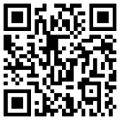Learners’ Perceptions about TikTok Tutorial Videos as Instructional Media in Learning Statistics
Abstract
Full Text:
PDFReferences
S. Ko and S. Rossen, Teaching Online: A Practical Guide. New York: Routledge, 2017.
J. Finkelstein, Learning in Real Time: Synchronous Teaching and Learning Online. San Fransisco: Jossey Bass, 2016.
L. Dawley, The Tools for Successful Online Teaching. Hershey: Information Science Publishing, 2007.
R. Huang, J. M. Spector, and J. Yang, Educational Technology: A Primer for the 21st Century. Singapore: Springer, 2019.
B. G. Davis, Tools for Teaching. San Fransisco: Jossey Bass, 2009.
K. E. Anderson, "Getting acquainted with social networks and apps: It is time to talk about TikTok," Library Hi Tech News, pp. 7-12, 2020.
Q. Chen, C. Min, W. Zhang, X. Ma, and R. Evans, "Factors Driving Citizen Engagement With Government TikTok Accounts During the COVID-19 Pandemic: Model Development and Analysis," Journal of Medical Internet Research, vol. 23, pp. 1-13, 2021.
C. H. Basch, J. Fera, I. Pierce, and C. E. Basch, "Promoting Mask Use on TikTok: Descriptive, Cross-sectional Study," JMIR PUBLIC HEALTH AND SURVEILLANCE, vol. 7, pp. 1-7, 2021.
C. Hayes, K. Stott, K. J. Lamb, and G. A. Hurst, "“Making Every Second Count”: Utilizing TikTok and Systems Thinking to Facilitate Scientific Public Engagement and Contextualization of Chemistry at Home," Journal of Chemical Education, 2020.
P. Escamilla-Fajardo, M. Alguacil, and S. L´opez-Carril, "Incorporating TikTok in higher education: Pedagogical perspectives from a corporal expression sport sciences course," Journal of Hospitality, Leisure, Sport & Tourism Education, vol. 28, pp. 1-13, 2021.
A. A. H. Edwards, "From TED Talks to TikTok: Teaching Digital Communication to Match Student Skills with Employer Desires," Basic Communication Course Annual, pp. 336-341, 2021.
H. v. d. Meij and P. Dunkel, "Effects of a review video and practice in video-based statistics training," Computers & Education, vol. 143, pp. 1-14, 2020.
J. J. Perrett, "The Benefits of Using a Course Disk to Aid in the Instruction of Statistics Courses," Journal of Statistics Education, vol. 18, pp. 1-21, 2010.
T. A. DeVaney, "Impact of Video Tutorials in an Online Educational Statistics Course," MERLOT Journal of Online Learning and Teaching, vol. 5, pp. 600-608, 2009.
D. Ary, L. C. Jacobs, and C. K. Sorensen, Introduction to Research in Education. Belmont: wadsworth, 2010.
G. Lai, Z. Zhu, and D. Williams, "Enhance Students’ Learning in Business Statistics Class Using Video Tutorials," Journal of Teaching and Learning with Technology, vol. 6, pp. 31-44, 2017.
D. S. Moore, "The Place of Video in New Styles of Teaching and Learning Statistics," The American Statistician, vol. 47, pp. 172-176, 1993.
P. Petocz, "Effective Video-based Resources for Learning Statistics," presented at International Conference on Teaching Statistics, Singapore, 1998.
Kusumarasdyati, "Statistical Reasoning or Statistical Method: Students’ Preferences for Learning Statistics," Journal of Physics: Conference Series, vol. 1417, pp. 1-5, 2019.
I. Gal and L. Ginsburg, "The Role of Beliefs and Attitudes in Learning Statistics," Journal of Statistics Education, vol. 2, 1994.
J. R. Alldredge, H. D. Johnson, and J. J. Sanchez, "Does Viewing Video of Statistics in Action Affect Student Attitudes?," presented at International Conference on Teaching Statistics, Bahia, 2006.
R. Heinich, M. Molenda, J. D. Russell, and S. E. Smaldino, Instructional Media and Technologies for Learning. Upper Saddle River: Merrill Prentice Hall, 2002.
L. M. Lesser, D. K. Pearl, J. J. W. III, D. M. Dousa, R. P. Carey, and S. A. Haddad, "Developing Interactive Educational Songs for Introductory Statistics," Journal of Statistics Education, vol. 27, pp. 283-252, 2019.
L. M. Lesser, "Motivating with music," presented at Colorado Council of Teachers of Mathematics Conference, Denver, 1998.
D. H. Schunk, Learning Theories: An Educational Perspective. Boston: Pearson, 2012.
P. F. Velleman and D. S. Moore, "Multimedia for Teaching Statistics: Promises and Pitfalls," The American Statistician, vol. 50, pp.217-225, 1996.
DOI: http://dx.doi.org/10.17977/um010v4i22021p80-85
Refbacks
- There are currently no refbacks.
 | Letters in Information Technology Education (LITE) |

1.png)
1.png)
4.png)
1.png)
.png)
.png)

3.png)
1.png)
1.png)

3.jpg)